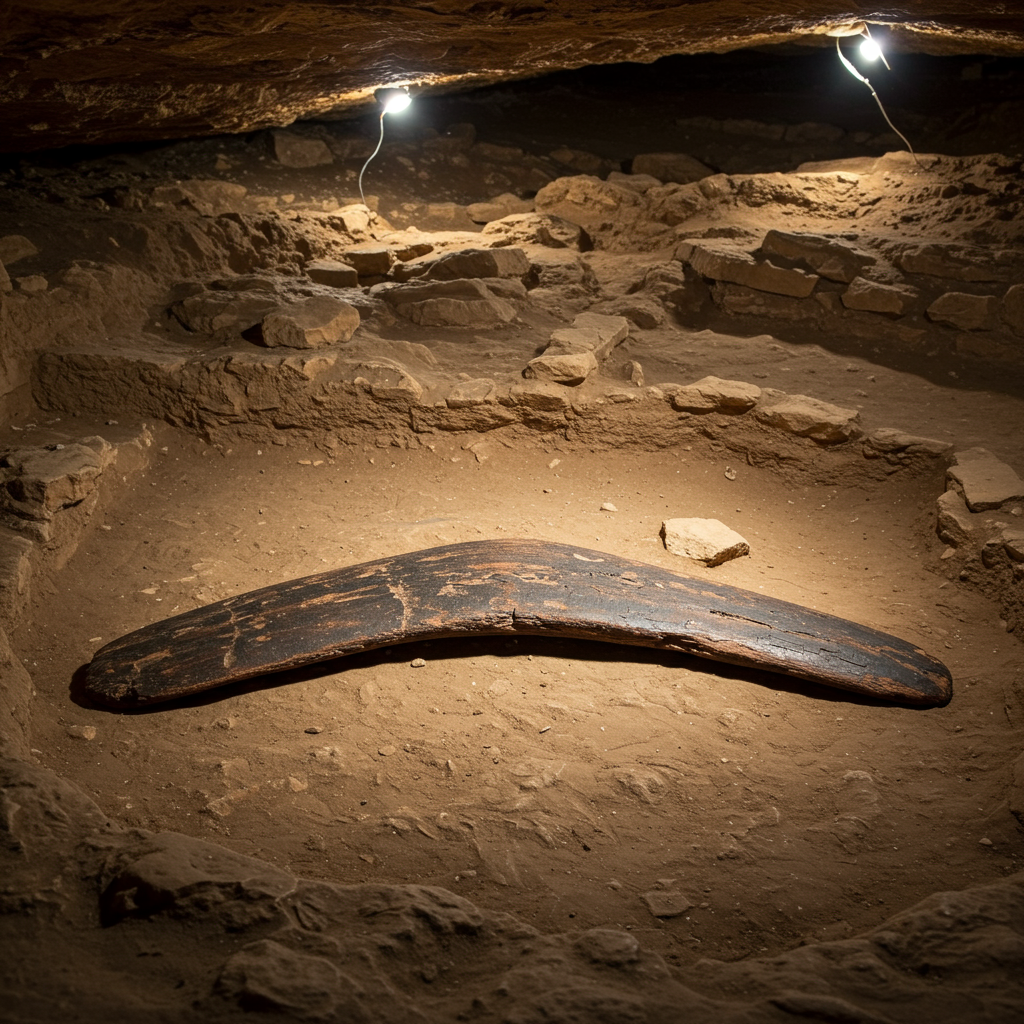A remarkable discovery in a cave in southern Poland has significantly pushed back the timeline for the world’s oldest known boomerang. Originally believed to be around 30,000 years old, new, more sophisticated dating methods reveal this ancient tool is actually between 39,000 and 42,000 years old. This makes it the oldest boomerang ever discovered and offers fascinating insights into the ingenuity of early Homo sapiens living in Europe during the Upper Paleolithic period.
Unearthed in Oblazowa Cave back in 1985 alongside other artifacts like human bones, animal remains, pendants, and stone tools, this particular boomerang immediately stood out. However, getting a precise age proved challenging. An initial radiocarbon dating attempt in the 1990s yielded a date of 18,000 years, which researchers suspected was too young due to potential contamination. To establish a more reliable chronology for the layer where the boomerang was found, scientists recently conducted new DNA and radiocarbon analyses on associated human and animal bones from the site. These analyses provided a series of dates that, when combined into a statistical model, strongly indicate the boomerang was crafted over 35,000 years ago, most likely within the 39,000 to 42,000-year range.
Fashioned from the dense, durable ivory of a mammoth tusk, the boomerang is a testament to the advanced technical skills of its ancient maker. Measuring around 28 inches (72 centimeters) in length – roughly the size of a baseball bat – it features an arched shape with a distinct flat-convex cross-section. Researchers describe the level of craftsmanship as “astonishing,” noting how early humans managed to shape such a “perfect object” from challenging material. The boomerang is exceptionally well-preserved, showing clear score marks that suggest it was meticulously polished and carved, possibly by a right-handed individual.
Despite its boomerang shape, analysis indicates this ancient tool was designed not to return to the thrower. Unlike the familiar returning boomerangs that utilize complex aerodynamic principles involving airfoil shapes, differential lift, and gyroscopic precession to loop back, this non-returning type was heavier and likely served a different purpose. Its shape and construction are consistent with modern non-returning throwing sticks still used in some parts of the world, including among certain Aboriginal groups in Queensland, Australia, for hunting, fighting, or even digging. This suggests the Polish find was primarily a powerful projectile weapon used for hunting prey, though its presence in a cave also containing potential burial artifacts hints at possible cultural or ritualistic significance.
The discovery of such an ancient boomerang in Europe challenges the common perception that these tools are exclusive to Aboriginal culture in Australia. While boomerangs hold profound cultural significance in Australia and have a deep history there – with rock art depicting them dating back 20,000 years and the oldest known wooden Australian boomerang around 10,500 years old – archaeological finds indicate similar throwing tools were used by various cultures across different continents throughout history. Examples include a 7,000-year-old wooden boomerang from Jutland and fragments of a 2,000-year-old returning oak boomerang found in The Netherlands. However, the Oblazowa Cave boomerang stands out due to its extreme age, unique material, and location, being the only one of its kind found in Poland.
This groundbreaking find provides remarkable insight into the technical capabilities, ingenuity, and cognitive advancements of early Homo sapiens. It demonstrates that complex curved throwing tools were invented in Europe much earlier than previously understood, further highlighting the sophisticated tool-making skills that allowed our ancestors to thrive in diverse environments. The research, conducted by a multinational team of scientists from Poland, Italy, Germany, France, Switzerland, and the UK, has been published in the journal PLOS One.




